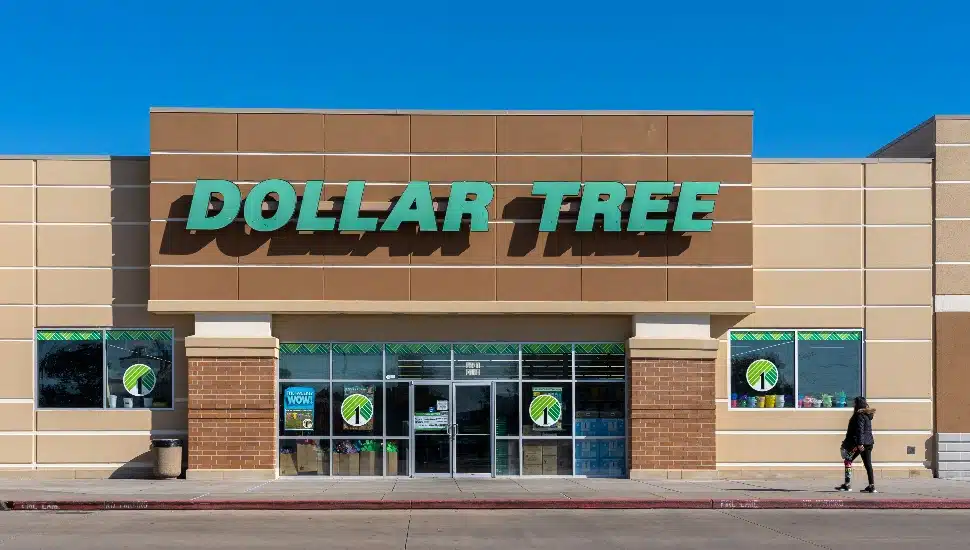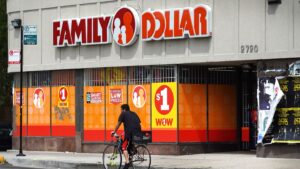Business
Dollar tree family dollar stores closing
Published
6 months agoon
By
Admin
The recent trend of Dollar Tree and Family Dollar stores closing has raised concerns among shoppers and industry analysts alike. These closures, while part of a broader retail landscape shift, highlight the challenges and strategic decisions that discount retailers face in today’s economic environment. This article will delve into the reasons behind these closures, the impact on consumers and communities, and what the future holds for the dollar store industry.
Overview of Dollar Tree and Family Dollar
Dollar Tree and Family Dollar are two of the most prominent players in the discount retail sector. Dollar Tree, known for its “everything for a dollar” pricing model, has long attracted budget-conscious consumers looking for a wide variety of products at low prices. Family Dollar, acquired by Dollar Tree in 2015, offers a slightly different model, with a mix of low-priced items, often exceeding the one-dollar mark, targeting low- to middle-income shoppers.
Reasons Behind the Closures

Several factors contribute to the recent wave of store closures across both brands:
1. Economic Pressures and Inflation
The ongoing inflationary pressures have significantly impacted the purchasing power of consumers. Rising costs of goods, driven by supply chain disruptions, increased fuel prices, and labor shortages, have forced Dollar Tree and Family Dollar to reconsider their pricing strategies. The traditional model of offering goods at extremely low prices becomes challenging when operating costs are on the rise. As a result, some stores have become unprofitable, leading to closures.
2. Shift in Consumer Behavior
The COVID-19 pandemic has accelerated changes in consumer behavior, with more people opting for online shopping over brick-and-mortar stores. While Dollar Tree and Family Dollar have strong physical store presences, they have lagged in the e-commerce space compared to competitors like Walmart and Amazon. The decline in foot traffic has made it difficult for some locations to sustain their operations.
3. Strategic Realignment
Dollar Tree’s acquisition of Family Dollar was intended to expand its market reach and capitalize on the latter’s customer base. However, the integration of the two brands has been challenging. Dollar Tree has had to close underperforming Family Dollar stores to streamline operations and focus on more profitable locations. This strategic realignment is a critical factor in the closures.
4. Increased Competition
The discount retail sector has become increasingly competitive, with more players entering the market and existing competitors like Dollar General expanding aggressively. Dollar Tree and Family Dollar have had to contend with price wars and market saturation, leading to the closure of stores that can’t compete effectively.
Impact on Consumers and Communities
The closure of Dollar Tree and Family Dollar stores has significant implications for consumers, particularly those in low-income and rural areas where these stores are often a primary source of affordable goods. Here are some of the key impacts:
1. Limited Access to Affordable Goods
For many communities, especially in “food deserts” where grocery stores are scarce, Dollar Tree and Family Dollar provide essential goods at low prices. Store closures can limit access to affordable food, household items, and other necessities, forcing residents to travel further or pay more for similar products elsewhere.
2. Job Losses
Store closures inevitably lead to job losses, affecting employees who often rely on these positions as a primary source of income. The loss of jobs can have a ripple effect on local economies, particularly in small towns where employment opportunities are limited.
3. Community Impact
Beyond providing goods and jobs, Dollar Tree and Family Dollar stores often serve as community hubs, particularly in rural or underserved urban areas. Their closure can lead to a sense of loss and erode community cohesion.
The Future of Dollar Stores
Despite the closures, the future of Dollar Tree and Family Dollar is not entirely bleak. The companies are taking steps to adapt to the changing retail environment:
1. Expansion of Product Offerings
Dollar Tree has recently started introducing items priced above one dollar, marking a significant shift in its business model. This move allows the company to offer a broader range of products, including those that are higher in quality or size, catering to consumers who are willing to spend a bit more.
2. Investment in E-commerce
Both Dollar Tree and Family Dollar are investing in their e-commerce capabilities to better compete with online giants. This includes improving their websites, offering more products online, and exploring options for home delivery or curbside pickup.
3. Focus on Core Markets
By closing underperforming stores, Dollar Tree is able to focus on core markets where it can maintain profitability and customer loyalty. This strategy includes opening new stores in areas with strong demand while exiting markets that are no longer viable.
4. Adapting to Consumer Trends
Understanding and adapting to consumer trends is crucial for the future success of Dollar Tree and Family Dollar. This includes offering healthier food options, expanding private-label brands, and enhancing the in-store shopping experience.
Conclusion
The closure of Dollar Tree and Family Dollar stores is a symptom of broader challenges in the retail industry, including economic pressures, changing consumer behavior, and intense competition. While these closures are concerning, they also represent an opportunity for the companies to adapt and evolve. By focusing on strategic realignment, expanding their product offerings, and investing in e-commerce, Dollar Tree and Family Dollar can position themselves for future success in a rapidly changing retail landscape.
The impact of these closures on consumers and communities cannot be underestimated, particularly in areas where access to affordable goods is already limited. As these companies navigate the complexities of the modern retail environment, their ability to balance profitability with their mission of providing value to customers will be critical in determining their long-term viability.
You may like

Efficient ACA Compliance Management with ACA-Track

Key Software Systems: Future-Proofing Courier Operations with Technology

Refrigerated Trailers: Benefits and Uses

100 Dynamic Duos: Legendary Pairings That Transcend Time
ARK: Survival Evolved Game Icons and Banners

cute:i1cdycptg50= drawings

Understanding New York Sports Club Membership: What It Offers and What Affects the Cost

Safety Tips for Compressed Air Dryers

drawing:23vyczbybxu= billie eilish

drawing:056aoyw74ce= rick and morty

How can online food delivery sales increase and attract the maximum number of customers in 2023?

MEP BIM: Revolutionizing Building Infrastructure Design

Revolutionizing Industries with ChatGPT

Resolving the Israeli-Palestinian Conflict: A Comprehensive Analysis

Skillful Passion: Wisconsin’s Dominant Volleyball Team

Virtual Reality Rental: A Futuristic Experience

Unlocking the Potential of cryptonewzhub.com Internet

Negin Behazin vs Dignity Health: Comprehensive Comparison

Unraveling the Mystery: Robert Card’s Tragic Passing

iPhone 14 Pro Max: Unveiling the Next Level Innovation

Efficient ACA Compliance Management with ACA-Track

Key Software Systems: Future-Proofing Courier Operations with Technology

Refrigerated Trailers: Benefits and Uses

100 Dynamic Duos: Legendary Pairings That Transcend Time
ARK: Survival Evolved Game Icons and Banners

cute:i1cdycptg50= drawings

Understanding New York Sports Club Membership: What It Offers and What Affects the Cost

Safety Tips for Compressed Air Dryers

drawing:23vyczbybxu= billie eilish

